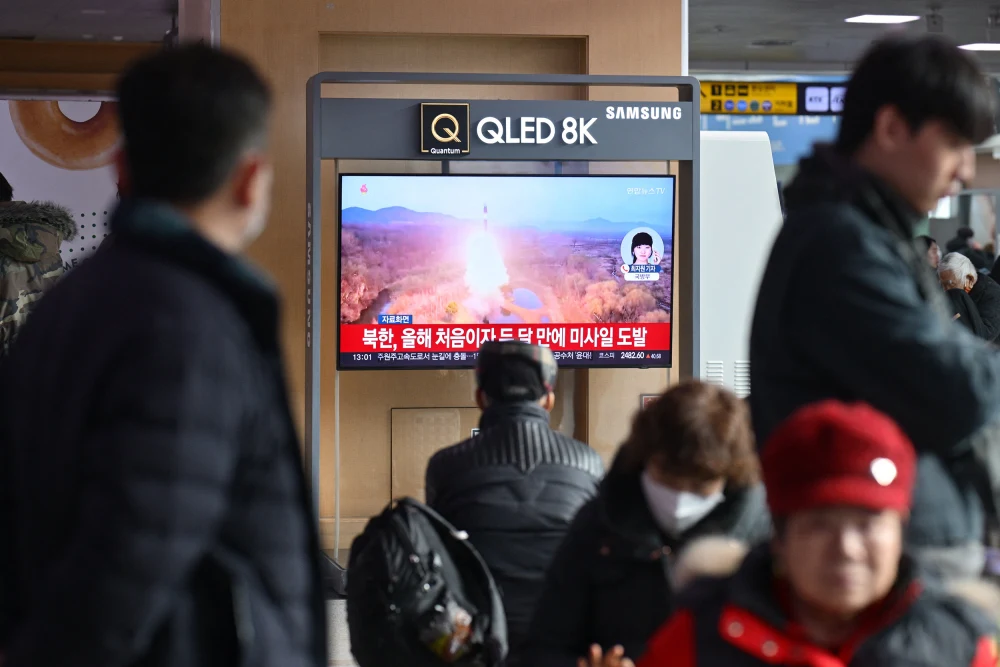North Korea test-fired multiple missiles toward its eastern waters on Tuesday, South Korea’s military reported, continuing its weapons demonstrations ahead of Donald Trump’s return to the White House.
South Korea’s Joint Chiefs of Staff confirmed that short-range ballistic missiles were launched from a northern inland area, flying approximately 155 miles before landing in waters between the Korean Peninsula and Japan.
In response, the South Korean military increased surveillance and shared the launch details with U.S. and Japanese militaries. Condemning the test as a “clear provocation,” the Joint Chiefs described it as a serious threat to regional peace and stability.
This marks North Korea’s second missile launch of 2025, following a ballistic missile test conducted last week.
On January 6, North Korea announced that the test involved a new hypersonic intermediate-range missile designed to target remote locations in the Pacific. Leader Kim Jong Un pledged to expand the country’s arsenal of nuclear-capable weapons to counter rival nations.

North Korea had an intense year of weapons testing in 2024, showcasing advanced systems such as solid-fuel intercontinental ballistic missiles capable of striking the U.S. mainland and shorter-range missiles designed to bypass South Korea’s missile defenses. Concerns are growing that its military capabilities could further advance through technology transfers from Russia, as the two nations deepen ties amid the ongoing war in Ukraine.
At a year-end political conference, Kim Jong Un pledged to implement the “toughest” anti-U.S. policy and condemned the Biden administration’s efforts to bolster security cooperation with Seoul and Tokyo, labeling it a “nuclear military bloc for aggression.”
North Korean state media did not elaborate on Kim’s policy plans or mention any specific remarks about Donald Trump. During Trump’s first term, he met Kim three times for discussions on North Korea’s nuclear program.
However, even if Trump returns to the White House, a swift revival of diplomacy with North Korea seems unlikely. Experts note that Kim’s strengthened position—bolstered by an expanded nuclear arsenal, a closer alliance with Russia, and weaker enforcement of U.S. international sanctions—creates new hurdles in resolving the nuclear standoff.

